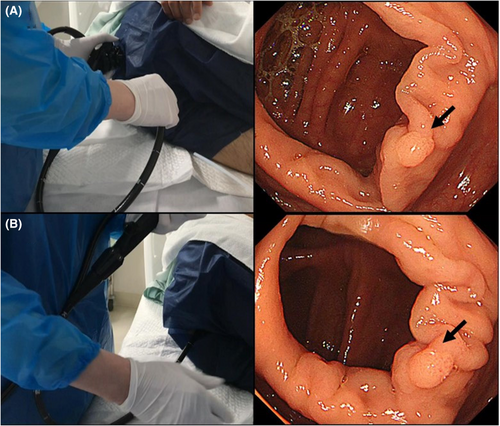Usefulness of unwinding the colonoscope shaft loop via the universal cord for colorectal endoscopic resections
Key Clinical Message
The colonoscope shaft loop can be unwound by establishing a loop in the universal cord of the colonoscope to maintain the same endoscopic view during colorectal endoscopic resections.
1 INTRODUCTION
Endoscopists must rotate the endoscope to bring the lesion closer to the forceps hole (typically in a 5–6 o'clock direction) while performing endoscopic colorectal resections.1, 2 During this process, a loop is sometimes created in the colonoscope shaft and the endoscopist's hands frequently need to maintain the loop to keep the same endoscopic view, making free hand movement difficult.
Unwinding the colonoscope shaft loop via the universal cord can be used for colorectal endoscopic treatment, such as colorectal endoscopic resections, because it frees the endoscopist's hands while maintaining the same endoscopic view during colorectal endoscopic resections (Figure 1, Video 1).

AUTHOR CONTRIBUTIONS
Taiji Yoshimoto: Conceptualization; resources; supervision; writing – original draft; writing – review and editing. Hiroshi Takihara: Conceptualization; supervision; writing – review and editing. Ryuichi Yamamoto: Conceptualization; resources.
ACKNOWLEDGMENTS
We thank the Japan Endoscopy Team for their great support.
FUNDING INFORMATION
No funding was received.
CONFLICT OF INTEREST STATEMENT
The authors have no conflicts of interest to declare.
CONSENT
Written informed consent was obtained from the patient to publish this report in accordance with the journal's patient consent policy.
Open Research
DATA AVAILABILITY STATEMENT
The data that support the findings of this study are available from the corresponding author upon reasonable request.




